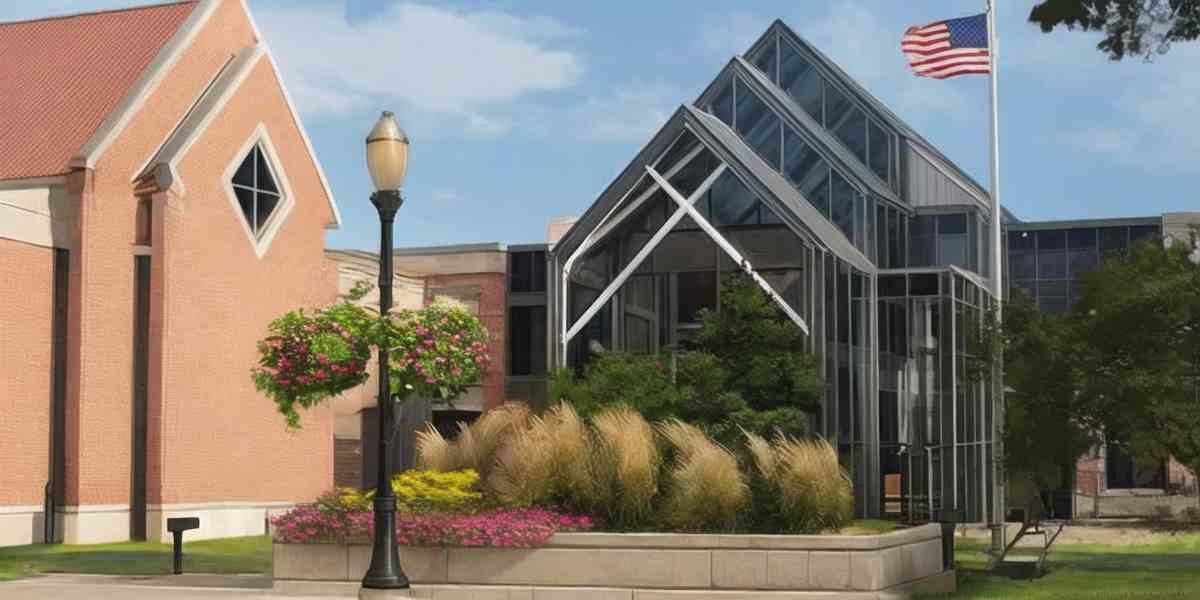Clarke University
2024 USNews Best Colleges Ranking: 280(↑5) (Click for schools/majors ranking)
School Characteristics: Private, non-Profit (4-Years)
Calendar systerm: Semester
Religious Affiliation: Roman Catholic
School Chief: Thom Chesney, Ph.D. (President)
Website: www.clarke.edu/; Phone: 5635886300
Location: 1550 Clarke Dr, Dubuque, IA, 52001-3198

Clarke University Important Facts
Clarke University Degrees and Majors
Clarke University Ranking and Admission
Clarke University Admission Score Requires
*Numbers at left represent SAT/ACT submitting percentage, numbers on blue blocks represent 25%-75% admission scores
**Drag green block to check data for different years, click blue block to check scores trends
Clarke University Students Diversity
Clarke University Students Age Distribution
Clarke University International Students Trends
Clarke University Campus and Safety
Nearby Top Colleges
Campus Safety
Reference
- Clarke University Official Website
- USNews Best Colleges Ranking
- USNews Bset Global Universities Ranking
- THE World University Ranking
- QS World University Ranking
- ARWU World University Ranking
- US Department of Education College Scorecard
- National Center for Education Statistics
- Forward Pathway US College Ranking Database
 Clarke University Important Facts Trends
Clarke University Important Facts Trends
 Clarke University degrees/majors
Clarke University degrees/majors
Clarke University major details
*Depends on whether majors have graduates in 2022 or not, Yes / No
**Move mouse on can check deitaled graudates number, click for major detailed information
***Due to privacy policy, graduate salaries are not shown for some majors that has few gradautes
| Major | Graduate Salary | Under | Master | Doctor |
|---|---|---|---|---|
| Health and Wellness, General. | - | |||
| Athletic Training/Trainer. | - | |||
| Physical Therapy/Therapist. | $71,799 | |||
| Registered Nursing/Registered Nurse. | $58,400-$107,354 | |||
| Family Practice Nurse/Nursing. | $58,400-$107,354 |
| Major | Graduate Salary | Under | Master | Doctor |
|---|---|---|---|---|
| Business Administration and Management, General. | $55,688-$76,914 | |||
| Accounting. | - |
| Major | Graduate Salary | Under | Master | Doctor |
|---|---|---|---|---|
| Social Work. | - |
| Major | Graduate Salary | Under | Master | Doctor |
|---|---|---|---|---|
| Education, General. | $37,379-$46,721 | |||
| Elementary Education and Teaching. | - | |||
| Secondary Education and Teaching. | - |
| Major | Graduate Salary | Under | Master | Doctor |
|---|---|---|---|---|
| Psychology, General. | $43,694 |
| Major | Graduate Salary | Under | Master | Doctor |
|---|---|---|---|---|
| Biology/Biological Sciences, General. | - | |||
| Biochemistry. | - |
| Major | Graduate Salary | Under | Master | Doctor |
|---|---|---|---|---|
| Sport and Fitness Administration/Management. | - |
| Major | Graduate Salary | Under | Master | Doctor |
|---|---|---|---|---|
| Graphic Design. | - | |||
| Drama and Dramatics/Theatre Arts, General. | - | |||
| Musical Theatre. | - | |||
| Fine/Studio Arts, General. | - | |||
| Music Performance, General. | - |
| Major | Graduate Salary | Under | Master | Doctor |
|---|---|---|---|---|
| Computer and Information Sciences, General. | - |
| Major | Graduate Salary | Under | Master | Doctor |
|---|---|---|---|---|
| History, General. | - |
| Major | Graduate Salary | Under | Master | Doctor |
|---|---|---|---|---|
| Mathematics, General. | - |
| Major | Graduate Salary | Under | Master | Doctor |
|---|---|---|---|---|
| Communication, General. | - |
| Major | Graduate Salary | Under | Master | Doctor |
|---|---|---|---|---|
| Philosophy. | - | |||
| Religion/Religious Studies. | - |
| Major | Graduate Salary | Under | Master | Doctor |
|---|---|---|---|---|
| Chemistry, General. | - |
| Major | Graduate Salary | Under | Master | Doctor |
|---|---|---|---|---|
| Liberal Arts and Sciences/Liberal Studies. | - |
| Major | Graduate Salary | Under | Master | Doctor |
|---|---|---|---|---|
| English Language and Literature, General. | - |
| Major | Graduate Salary | Under | Master | Doctor |
|---|---|---|---|---|
| Spanish Language and Literature. | - |
 Clarke University Schools/Majors Ranking
Clarke University Schools/Majors Ranking
Under Ranking (2024)
- No Ranking
Grad Ranking (2025)
*Rankings have been updated to 2025USNews schools/majors ranking, rankings are for reference only
*numbers in bracket represent rankings change compare to last version
 Clarke University Varsity Athletes
Clarke University Varsity Athletes
| NAIA Division I | MEN | WOMEN |
|---|---|---|
| Football | 148 | - |
| Soccer | 52 | 51 |
| Baseball | 65 | - |
| Basketball | 24 | 31 |
| Track and Field and Cross Country (combined) | 20 | 25 |
| Volleyball | 14 | 26 |
| Softball | - | 28 |
| Lacrosse | 14 | 12 |
| Golf | 14 | 6 |
| Bowling | 10 | 10 |
| NAIA Division I | MEN | WOMEN |
|---|---|---|
| Football | 110 | - |
| Soccer | 24 | 40 |
| Baseball | 60 | - |
| Basketball | 23 | 32 |
| All Track Combined | 25 | 29 |
| Volleyball | 13 | 28 |
| Softball | - | 31 |
| Lacrosse | 16 | 11 |
| Bowling | 10 | 15 |
| Golf | 11 | 5 |
| NAIA Division I | MEN | WOMEN |
|---|---|---|
| Football | 83 | - |
| All Track Combined | 36 | 42 |
| Baseball | 52 | - |
| Basketball | 23 | 25 |
| Soccer | 16 | 32 |
| Volleyball | 11 | 28 |
| Bowling | 19 | 12 |
| Lacrosse | 16 | 13 |
| Softball | - | 26 |
| Golf | 14 | 5 |
| Rodeo | - | - |
| Equestrian | - | - |
| Weight Lifting | - | - |
| Beach Volleyball | - | - |
| Badminton | - | - |
| Sailing | - | - |
| Archery | - | - |
| Other Sports | - | - |
| Wrestling | - | - |
| Water Polo | - | - |
| Table Tennis | - | - |
| Track and Field, X-Country | - | - |
| Track and Field, Outdoor | - | - |
| Track and Field, Indoor | - | - |
| Tennis | - | - |
| Team Handball | - | - |
| Synchronized Swimming | - | - |
| Swimming | - | - |
| Swimming and Diving | - | - |
| Squash | - | - |
| Skiing | - | - |
| Rowing | - | - |
| Rifle | - | - |
| Ice Hockey | - | - |
| Gymnastics | - | - |
| Field Hockey | - | - |
| Fencing | - | - |
| Diving | - | - |

 Clarke University Important Facts Trends
Clarke University Important Facts Trends
















































































































































































































































































































































































































































